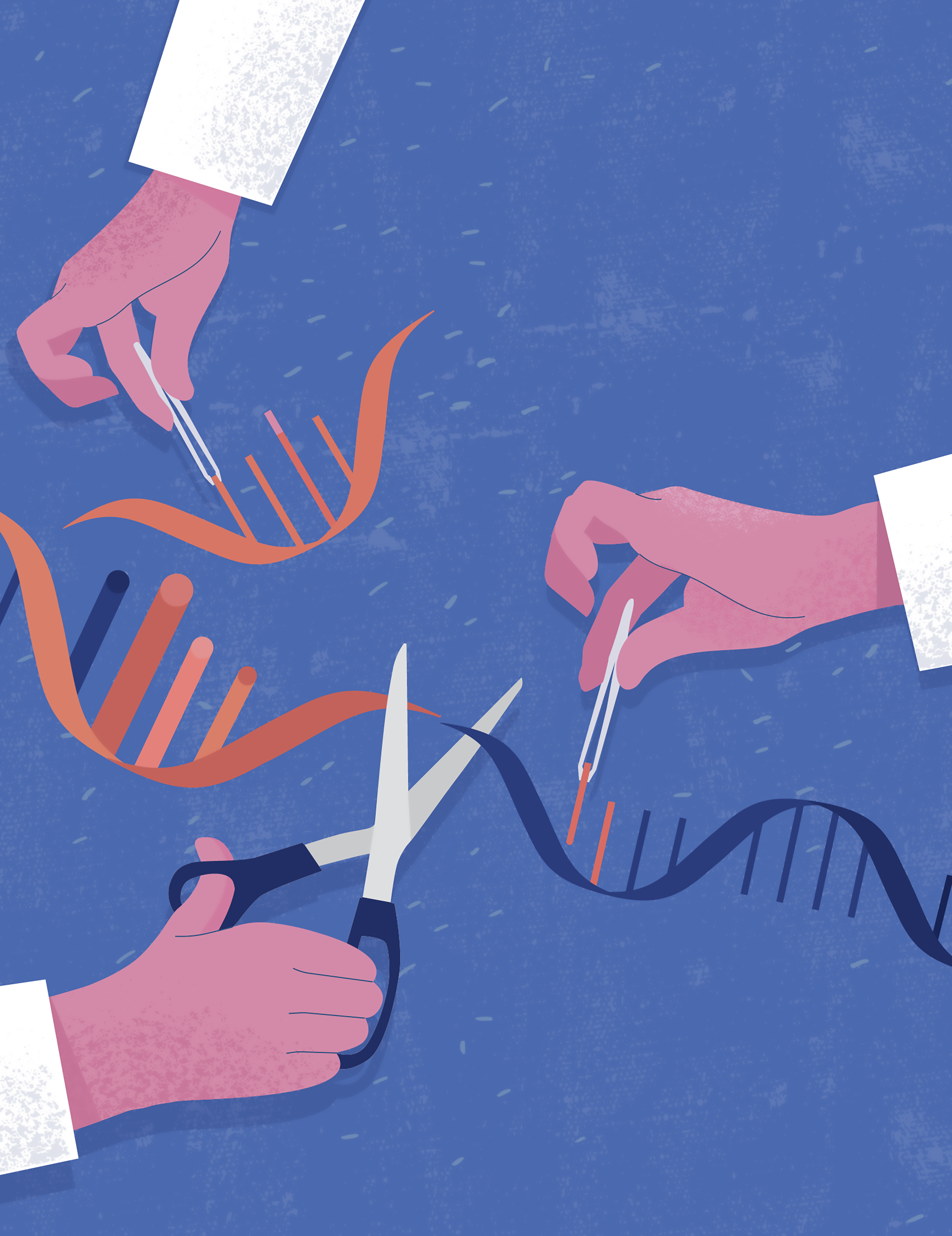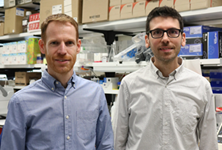A genome-wide screen drills down to gene segments to find out which ones matter for cell fitness.

Although no hands, scissors or tweezers are involved, a process called RNA splicing acts like a molecular editor, cutting and pasting gene segments, called exons, into different combinations. This allows a single gene to produce multiple proteins, but also introduces new opportunities for errors, which frequently occur in cancer cells. Now, CCR researchers have analyzed how individual exons influence a cell’s ability to survive and multiply on an unprecedented scale, taking the first step toward identifying exons that could serve as targets for new cancer therapies.
Credit: SPGM, FNL, NCI, NIH; iStock
Humans have about 20,000 genes that spell out the instructions for how to produce proteins. But our cells don’t have to use these genes the same way every time. Every gene’s protein-coding sequence lies in segments of DNA called exons, which can be assembled in different ways. This gives cells flexibility to produce the vast array of proteins they need to keep the body healthy. However, it also introduces opportunities for error.
To produce a particular protein, cells first make an RNA copy of a gene. Non-coding sequences called introns are snipped out of the RNA and some or all of the exons are pieced back together in a process called splicing. When splicing is disrupted, as it often is in cancerous cells, exons can be left out from where they are needed or included when they should be skipped. The consequences of these missteps vary, but sometimes generate abnormal proteins that contribute to cancer’s growth or spread.
“It is very well established that splicing is messed up in cancer cells,” says Stadtman Tenure-Track Investigator Thomas Gonatopoulos-Pournatzis, Ph.D. “The cancer cells take advantage to find what will help them grow better, evade treatments and metastasize. But despite this knowledge, we still don't know which are the most critical splicing events to exploit therapeutically.”
In fact, Gonatopoulos-Pournatzis says, little is known about how most individual exons impact function. Thus, it’s hard to predict whether omitting an exon will have significant consequences on cells’ ability to survive and multiply, which is known as cell fitness.
In research published in Molecular Cell, Gonatopoulos-Pournatzis collaborated with Stadtman Tenure-Track Investigator Michael Aregger, Ph.D., to assess how exons throughout the human genome affect cell fitness. While similarly comprehensive screens have tested how individual genes impact cell function, Gonatopoulos-Pournatzis and Aregger are the first to do it at the exon level.
The researchers used a CRISPR-based gene editing tool they had developed to snip more than 12,000 exons out of the genomes of lab-grown human cells, one at a time. Then they assessed how well cells grew when they were missing any given exon. In this way, they identified more than 2,000 exons that promote cell fitness. They also found 171 fitness-suppressing exons.
Gonatopoulos-Pournatzis says the findings help clarify what makes certain exons important for cell survival and proper proliferation. Beyond that, the new catalog of fitness-promoting exons is a roadmap for further study, particularly for cancer and other diseases where splicing is dysregulated.
Michael Aregger, Ph.D.
Stadtman Investigator
Molecular Targets Program
Thomas Gonatopoulos-Pournatzis, Ph.D.
Stadtman Investigator
RNA Biology Laboratory
“I think it's a very useful resource,” Aregger says. “For the first time, we systematically categorized thousands of different exons to pinpoint which ones may be most interesting for functional follow-up studies, because we see they're linked to a phenotype that is important for health and disease.”
Gonatopoulos-Pournatzis’ team has already followed up on one exon on their list — exon 8 from a gene called TAF5. They found that its exclusion prevents a regulator of gene activity from assembling, which leads to dramatic changes in how genes are expressed. As their teams and others continue to investigate exons’ functional impacts, they will learn which splicing changes are most consequential for health and why — which could ultimately inform the design of new cancer therapeutics.



